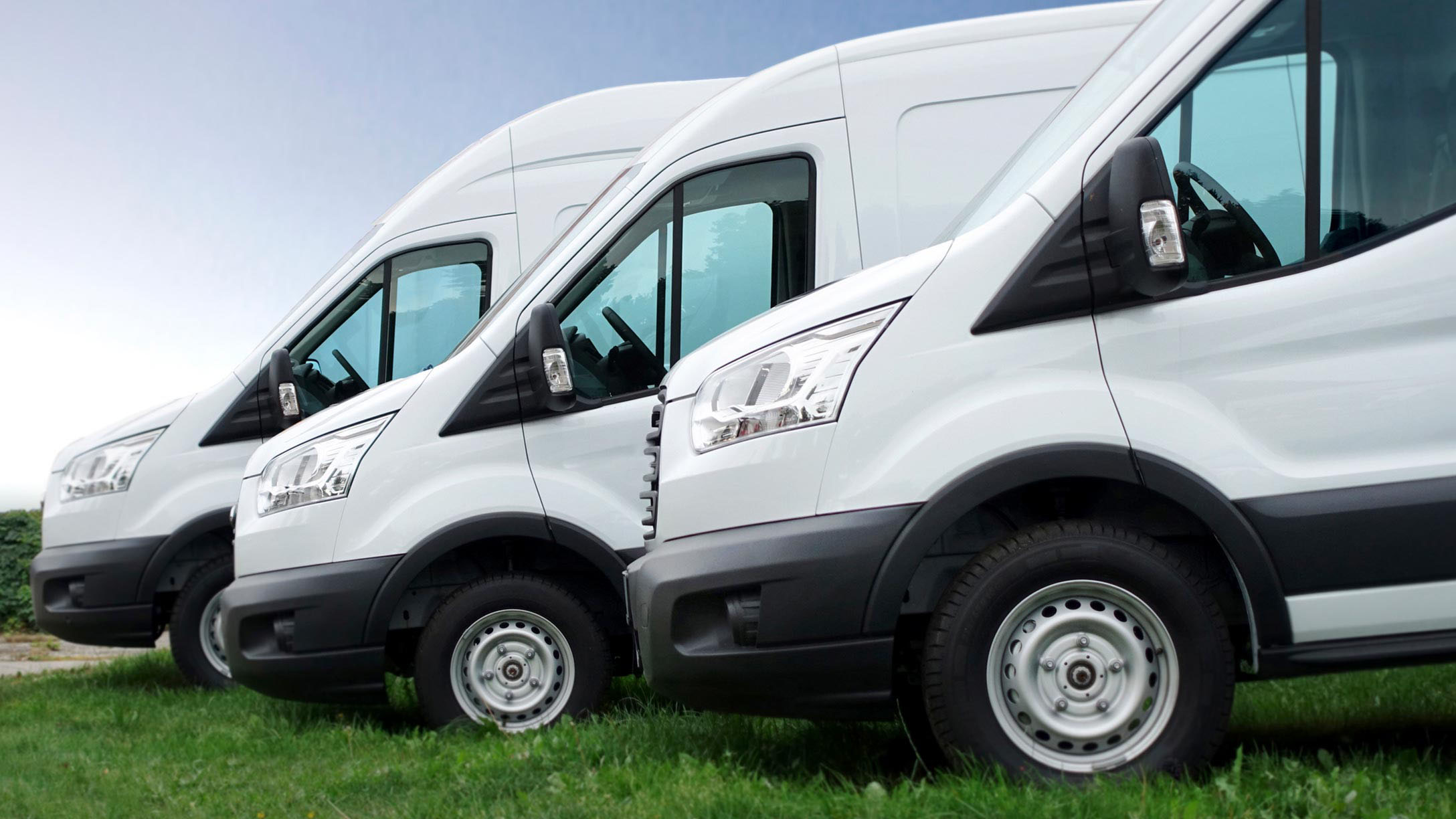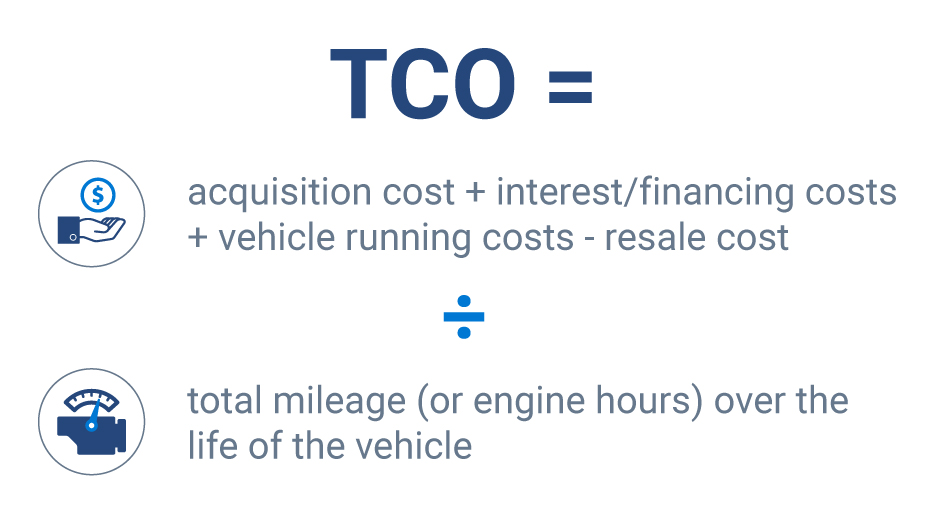How do you calculate total cost of ownership?
Find out more about calculating total cost of ownership for your fleet vehicles.


Total cost of ownership (TCO) expenses are often one of the highest costs associated with fleet management. The various components of TCO need to be measured and managed so fleet managers can identify problems and make educated decisions.
What is total cost of ownership?
Total cost of ownership (TCO) is a term generally used when breaking down the cost of your organization's fleet. The TCO of a vehicle includes several factors that many may not think to consider in their vehicle purchasing decisions.
TCO includes:
- The initial cost of the vehicle
- The return dollars when the vehicle is sold
- All the costs in between buying and selling the vehicle
See also: Cost of ownership: Consumer vs. enterprise devices
How to calculate TCO
Total cost of ownership is calculated using the following formula:

To help understand the above equation, we’ve broken down the formula into categories. Each category is summarized below with helpful tips for using Geotab’s tools and solutions to enhance data-driven decisions.
Vehicle acquisition costs
The more options added to the vehicle, the higher the cost. This is why it is important to consider the value of these added options to the business and the resale value of the vehicle.
Acquisition usually includes:
- The dealer’s sell price
- Manufacture concessions or incentives
- Vehicle upfitting costs (storage design, configuration, installation, etc.)
- Licensing
- Pre-delivery inspection
- Local taxes
- Environmental taxes
- Tank fill-ups
- Administration costs
Top tools and resources:
Fleet financing costs
Whether the vehicle is leased or owned, there is a financial burden attached to the asset. This is an important cost to consider.
Some companies have very low cost of capital and may decide to buy their own vehicles while others like the advantages of leasing or borrowing. Either way, interest costs (or opportunity costs of ownership) and lease administration fees are important costs to consider.
Top tools and resources:
Running costs
The costs of running a vehicle are not to be overlooked. Vehicle upkeep and maintenance as well as general day-to-day expenses greatly contribute to your TCO.
Running costs include:
- Fuel (gas or electric)
- Scheduled and unexpected maintenance repairs
- Vehicle insurance
- Plate renewals
- Insurance deductibles
- Vehicle repairs
- Car washes
- Tolls
- Tickets
Top tools and resources:
- Real-time mileage and engine hours
- Geotab’s Fuel Tracker Add-In
- Vehicle diagnostics
- Geotab’s Driver Safety Scorecard
- Geotab Drive
- Collision reconstruction
- Geotab Marketplace
Resale costs
When you decide to sell a fleet vehicle, there are two factors to consider here:
- Which vehicle attracts the highest dollars at time of resale
- What is the best mileage, age or time to replace the vehicle
That being said, these factors are not mutually exclusive decisions. For this reason, resale value is sometimes not considered when selecting a vehicle. However, it is one of the biggest factors in calculating total cost of ownership.
It is worth consulting the market or accessing professional resale resources to best understand the value of the asset and the optimal time to replace it.
Top tools and resources:
Why is calculating TCO vital?
Total cost of ownership is a vital part of fleet management and is not something to be ignored. Calculating it correctly means more accuracy in your financial reporting and better understanding of each vehicle’s performance in comparison to others in your fleet.
A company’s profitability can be greatly affected by your total cost of ownership. Not only does it account for a large portion of your company’s budget, but it also has the potential to make you money if you take advantage of it.
Choosing a reliable vehicle that meets the needs of the job at the lowest possible cost is essential to fleet success. In addition, using the right tools to monitor vehicles or drivers allows fleet managers to proactively get ahead of cost creep.
Geotab can help you calculate your total cost of ownership. To find out more, visit Geotab.com.
Subscribe to get industry tips and insights

Laurie Sehl is Global Account Manager for Geotab.
Subscribe to get industry tips and insights
Related posts

Field service is losing money to bad data: Go beyond GPS with smarter telematics
June 27, 2025
3 minute read


Enhancing winter road maintenance with postseason materials usage analyses
June 20, 2025
6 minute read

Building a self-sustaining school bus driver safety program with Geotab Vitality
June 13, 2025
7 minute read

The impact of unproductive idling on police vehicle service life
June 10, 2025
3 minute read

Unlock field service ROI: Your practical guide to connected operations playbook
June 9, 2025
3 minute read